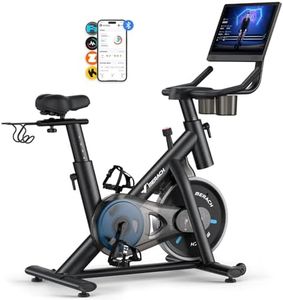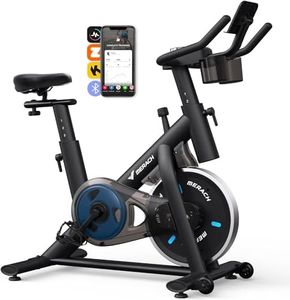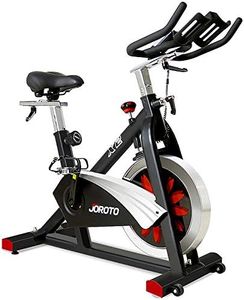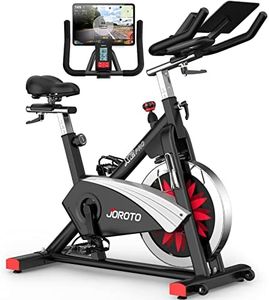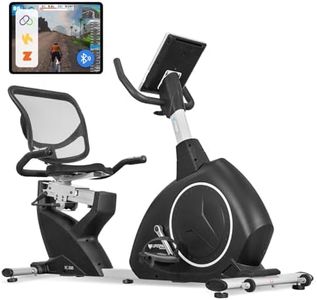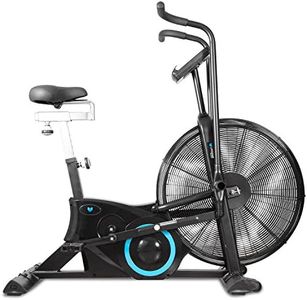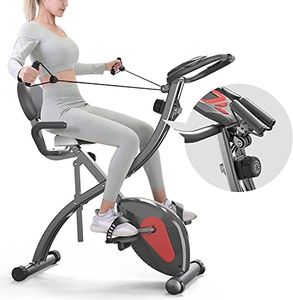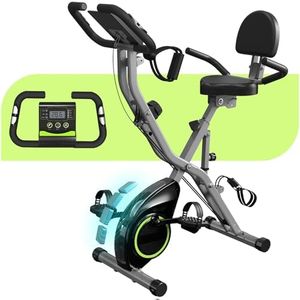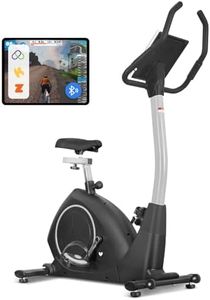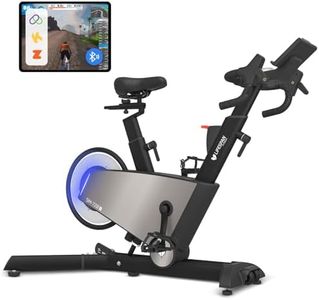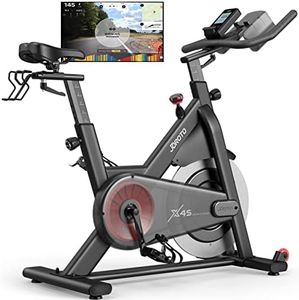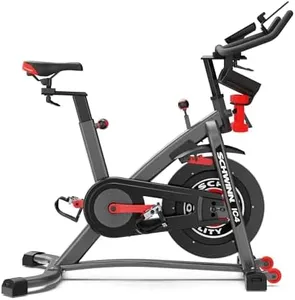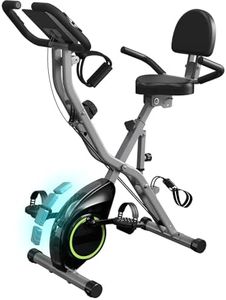We Use CookiesWe use cookies to enhance the security, performance,
functionality and for analytical and promotional activities. By continuing to browse this site you
are agreeing to our privacy policy
10 Best Indoor Cycles
From leading brands and best sellers available on the web.Buying Guide for the Best Indoor Cycles
Selecting the right indoor cycle can make your home workouts more effective and enjoyable, whether you're aiming to improve fitness, train for cycling events, or simply stay active. To find the indoor cycle that fits your needs, it's important to understand the main features and specifications that differentiate one bike from another. By learning what these specs mean and how they can impact your exercise experience, you can make a confident, informed decision.Resistance TypeResistance type refers to the mechanism the bike uses to make pedaling harder or easier. The main types are friction, magnetic, and sometimes fan-based. Friction resistance uses felt or leather pads pressing against the flywheel, offering a wide range of resistance but can be noisier and may require occasional maintenance. Magnetic resistance uses magnets to create resistance without contact, making it quieter, more durable, and smoother to use, though sometimes at a higher cost. Fan resistance (air bikes) increases resistance with your pedaling speed and offers a different riding feel. To choose, consider maintenance preferences, noise levels in your environment, and the kind of ride feel you enjoy.
Flywheel WeightFlywheel weight is how much the rotating wheel at the front or back of the bike weighs. It determines the 'feel' of your ride—heavier flywheels tend to provide smoother, more stable motion that closely mimics outdoor cycling, but they can also make the bike harder to move or start. Lighter flywheels are easier to pedal but may result in a choppier, less realistic ride. For most users, a moderate to heavy flywheel will offer a smooth experience for varied workouts, but if portability or ease of use is your priority, a lighter flywheel may be better.
AdjustabilityAdjustability means how much you can change the position of the seat, handlebars, and sometimes pedals. More adjustment options allow for a better, more comfortable fit and can help simulate different riding styles or accommodate multiple users of different heights. If several people will use the bike or you’re sensitive to comfort and posture, look for a model with a wide range of easy adjustments.
Console FeaturesConsole features refer to the digital display and what stats it tracks, such as speed, time, distance, heart rate, cadence (pedal speed), resistance level, and calories burned. Some consoles also offer connectivity to fitness apps or interactive training programs. Decide which data motivates you most or supports your training goals, and look for a bike with a display that provides those specific metrics in an easy-to-read format.
Drive SystemThe drive system is how the bike transfers your pedaling power to the flywheel, most commonly via either a chain or a belt. Chain drives feel more like a road bike but require periodic lubrication and can be a bit noisier. Belt drives are quieter, smoother, often need less maintenance, and are generally preferred for home use. If you prioritize a low-maintenance and quiet ride, a belt-driven system might be ideal.
Maximum Weight CapacityMaximum weight capacity is the highest rider weight the bike can safely support, which reflects the build quality and durability of the frame. Higher capacities indicate a sturdier bike that can handle heavier and potentially more intense users. Always check this spec to ensure the bike can support you comfortably, especially if you’re near the higher end of typical user weights or you expect to ride vigorously.
Pedal TypePedal type describes whether the pedals have cages (toe clips), are flat, or are compatible with cycling shoes via SPD or other clips. Toe cages allow for a secure grip with regular athletic shoes, while clip-in pedals are favored by serious cyclists for better power transfer but require compatible shoes. Consider your riding style—if you’re just starting, cages or flat pedals may suffice, but advanced riders might benefit from clip-in options for harder workouts.
